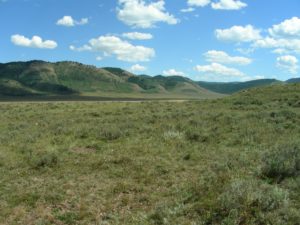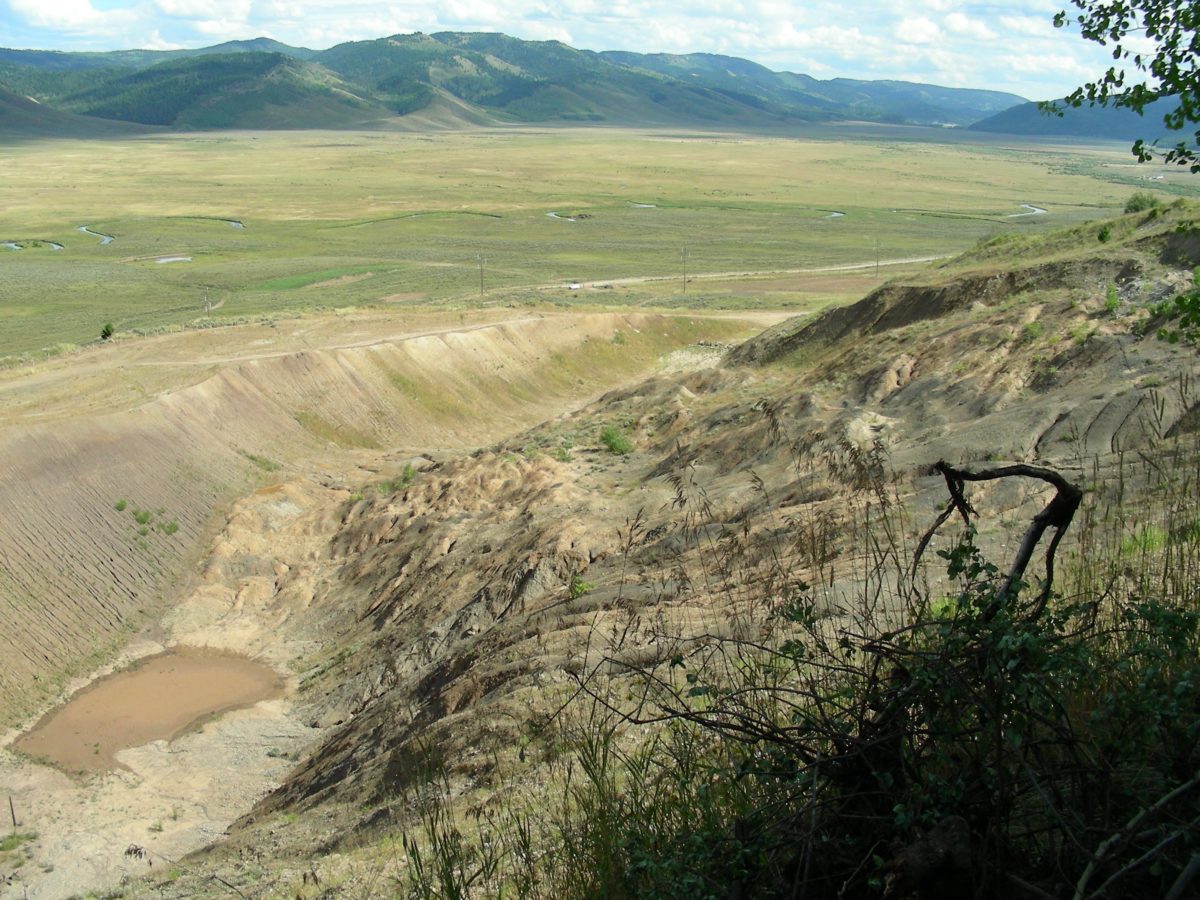ENVIRONMENTAL CONSULTING SERVICES,
RASMUSSEN VALLEY MINE – LANE CREEK MINE SITE
Caribou County, Idaho
Marathon Engineering and Environmental Services, Inc. (Marathon) assisted Rocky Mountain Environmental in performing a baseline environmental assessment on a 319 acre tract for a future phosphate mine expansion within southeastern Idaho. The study areas included mesic wet meadows sheep creek and sagebrush rangeland on the valley floor to phosphate mine pit, aspen and coniferous forests on the high mountain ranges.
The baseline environmental assessment of the Lane Creek Mine Site consisted of the following tasks:
- Wetland Assessment
- Survey using GPS
- Soil and Vegetation Sampling for metals (Selenium and Cadmium)
- Threatened and Endangered Plant Survey
- Vegetation Habitat Associations Survey
- Preparation of Survey Plans and exhibits using CADD and GIS
 The wetland assessment included a wetland delineation, survey of the wetlands points using GPS, preparation of report, survey plan and United States Army Corps of Engineers Jurisdictional Determination to verify the location of the wetlands boundaries within the Subject Property. The wetland delineation consisted of establishing sampling locations within uplands and wetlands to assess the three wetland criteria (vegetation, soil, and hydrology) under the Interim Regional Supplement to the Corps of Engineers Wetland Delineation Manual: Western Mountains, Valleys, and Coast Region (2008) and the United States Army Corps of Engineers Wetland Delineation Manual (1987).
The wetland assessment included a wetland delineation, survey of the wetlands points using GPS, preparation of report, survey plan and United States Army Corps of Engineers Jurisdictional Determination to verify the location of the wetlands boundaries within the Subject Property. The wetland delineation consisted of establishing sampling locations within uplands and wetlands to assess the three wetland criteria (vegetation, soil, and hydrology) under the Interim Regional Supplement to the Corps of Engineers Wetland Delineation Manual: Western Mountains, Valleys, and Coast Region (2008) and the United States Army Corps of Engineers Wetland Delineation Manual (1987).
Marathon developed a soil and vegetation sampling protocol to establish the environmental baseline of metals such as selenium and cadmium. Selenium and cadmium are naturally occurring metals found in shale formations associated with phosphate ore and can be harmful to live stock such as cattle, sheep and horses. The main purpose sampling was to determine the concentrations of cadmium and selenium within the upper soil and in plant material in the sampling areas in order to assess accumulations that may occur in plant tissues in areas of undisturbed soil, so that these baseline concentrations can be compared to conditions during and after mining. The soil and vegetation samples were collected and sent to a certified analysis.
A vegetation habitat association survey was conducted to determine the vegetation associations within the tract. Observations and findings from the vegetation habitat association survey were used to develop a Vegetation Community Map and a report describing each plant community, dominant herbaceous and woody species in each association, and the general health of each mapped vegetation association. As part of the vegetation association survey, a floral survey was performed to determine if any of the following listed species of concern were found with the tract: Idaho sedge (carex idahoa), green needlegrass (Nassella viridula), red glasswort (Salicornia rubra), hoary willow (Salix candida), tufted cryptanth (Cryptantha caespitosa), green muhley (Muhlenbergia racemosa) and cache penstemmon (Penstemmon compactus). None of the species of concern were identified within the tract.
Client: Rocky Mountain Environmental Associates, Inc.
482 Constitution Way # 303
Idaho Falls, Idaho 83402
Period of Performance:
2009-2010
Key Personnel:
Robert Carter, Principal Environmental Scientist
Christopher S. Andes, Senior Environmental Scientist
Ryan Healy, Environmental Scientist
Craig Harris, CADD Manager

